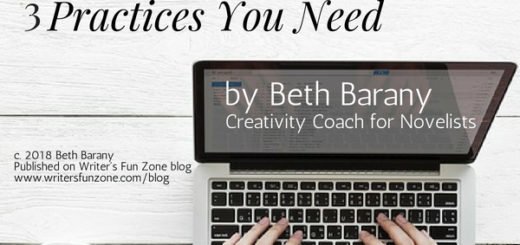Writing, Fitness and Natalie Goldberg by Faith Van Horne
 In today’s post, author Faith Van Horne discusses the importance of having our body as involved in our writing as our mind. Inspired by Natalie Goldberg and her book, Writing Down the Bones. Enjoy!
In today’s post, author Faith Van Horne discusses the importance of having our body as involved in our writing as our mind. Inspired by Natalie Goldberg and her book, Writing Down the Bones. Enjoy!
***
I love Natalie Goldberg’s concept of writing practice. For those not familiar, in Writing Down the Bones, she advocates a simple concept: setting aside time each day, even if it’s only ten minutes, to devote oneself to the unbound, physical exercise of writing. And it is exercise.
Re-reading the book, I came across a great passage that reminds me how bodily involved the act of writing is. Writing is not strictly a passive activity, as she explains in the chapter entitled “Writers Have Good Figures”:
What people don’t realize is that writing is physical… The rule for writing practice of “keeping your hand moving,” not stopping, actually is a way to physically break through your mental resistances and cut through the concept that writing is just about ideas and thinking. You are physically engaged with the pen, and your hand, connected to your arm, is pouring out the record of your senses. There is no separation between the mind and body; therefore, you can break through the mind barriers to writing through the physical act of writing, just as you can believe with your mind that your hand won’t stop at the wood, so you can break a board in karate. [Emphasis mine.]
Of course, being a student of karate, I was particularly drawn to this passage. I love the way Goldberg stresses that writing is an activity that engages all of one’s being. The arm is physically engaged with the pen and paper, which is felt against the skin of the hand (or the keyboard keys against the fingers, depending on your writing method). Mind and body are fully engaged, even if the focus is internal, on the thoughts bleeding out. They must work together to create the final piece: words on paper.
The same is true of activity that’s more externally physically engaged. When one is running, the legs are pounding against the ground; the lungs and body are fully engaged. Yet it’s not simply physical. The mind must remain active as well. As we move through space, we must maintain awareness of the obstacles in front of us. As our muscles threaten to give out when we reach the limits of our endurance, we have to call on the deeper parts of our mind to keep our bodies moving.
Goldberg touches on this in the last sentence of the quoted passage. Breaking a board in karate is not simply about having the necessary strength and technique to shatter the wood. The karateka must visualize, in the mind’s eye, the act of breaking through. Mental strength is just as important as physical.
In both cases, the underlying concept is really what I, and many others have called, flow. When we’re totally engaged with an activity, mind and body work in concert. We’re fully turned on, transported, alive. To me, this type of engagement touches on the edges of mysticism.
When people have a hard time sticking to a physical routine, or a writing routine, a lot of times boredom is a factor. In those cases, I think the real issue is that the writer/exerciser hasn’t found that “flow space.” It’s hard to stay in that space, even when doing an activity one enjoys. But once you’ve found that method of writing or exercise that opens up all your valves, nothing else can replace it.
Have you found that “flow space” in your writing and exercise routine? What keeps you going?
***
Editor’s note: As always, we invite your questions and comments.
***
 Faith Van Horne is the author of the young adult fantasy novel Slideways. Her collection of offbeat horror stories, Super Sargasso, is now available. She is currently working on another novel. In her free time, she practices karate, and even helps teach it a little. She also blogs at Scribatious (faithvanhorne.
Faith Van Horne is the author of the young adult fantasy novel Slideways. Her collection of offbeat horror stories, Super Sargasso, is now available. She is currently working on another novel. In her free time, she practices karate, and even helps teach it a little. She also blogs at Scribatious (faithvanhorne.






